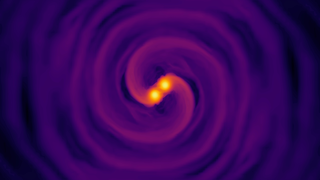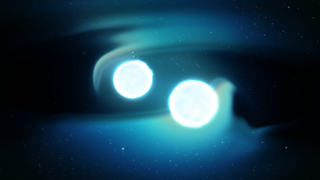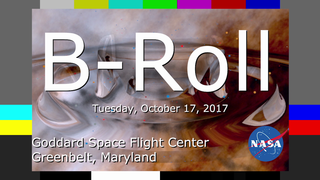Universe
ID: 12740
For the first time, NASA scientists have detected light tied to a gravitational-wave event, thanks to two merging neutron stars in the galaxy NGC 4993, located about 130 million light-years from Earth in the constellation Hydra.
Shortly after 8:41 a.m. EDT on Aug. 17, NASA's Fermi Gamma-ray Space Telescope picked up a pulse of high-energy light from a powerful explosion, which was immediately reported to astronomers around the globe as a short gamma-ray burst. The scientists at the National Science Foundation’s Laser Interferometer Gravitational-wave Observatory (LIGO) detected gravitational waves dubbed GW170817 from a pair of smashing stars tied to the gamma-ray burst, encouraging astronomers to look for the aftermath of the explosion. Shortly thereafter, the burst was detected as part of a follow-up analysis by ESA’s (European Space Agency’s) INTEGRAL satellite.
NASA's Swift, Hubble, Chandra and Spitzer missions, along with dozens of ground-based observatories, including the NASA-funded Pan-STARRS survey, later captured the fading glow of the blast's expanding debris.
Neutron stars are the crushed, leftover cores of massive stars that previously exploded as supernovas long ago. The merging stars likely had masses between 10 and 60 percent greater than that of our Sun, but they were no wider than Washington, D.C. The pair whirled around each other hundreds of times a second, producing gravitational waves at the same frequency. As they drew closer and orbited faster, the stars eventually broke apart and merged, producing both a gamma-ray burst and a rarely seen flare-up called a "kilonova."
Neutron star mergers produce a wide variety of light because the objects form a maelstrom of hot debris when they collide. Merging black holes -- the types of events LIGO and its European counterpart, Virgo, have previously seen -- very likely consume any matter around them long before they crash, so we don't expect the same kind of light show.
Within hours of the initial Fermi detection, LIGO and the Virgo detector at the European Gravitational Observatory near Pisa, Italy, greatly refined the event's position in the sky with additional analysis of gravitational wave data. Ground-based observatories then quickly located a new optical and infrared source -- the kilonova -- in NGC 4993.
To Fermi, this appeared to be a typical short gamma-ray burst, but it occurred less than one-tenth as far away as any other short burst with a known distance, making it among the faintest known. Astronomers are still trying to figure out why this burst is so odd, and how this event relates to the more luminous gamma-ray bursts seen at much greater distances.
NASA’s Swift, Hubble and Spitzer missions followed the evolution of the kilonova to better understand the composition of this slower-moving material, while Chandra searched for X-rays associated with the remains of the ultra-fast jet.
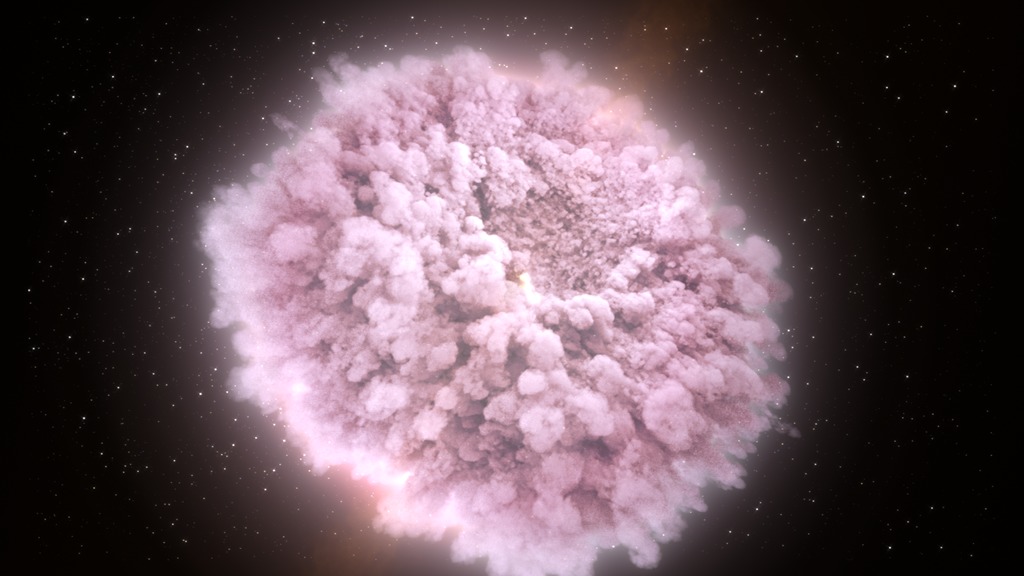
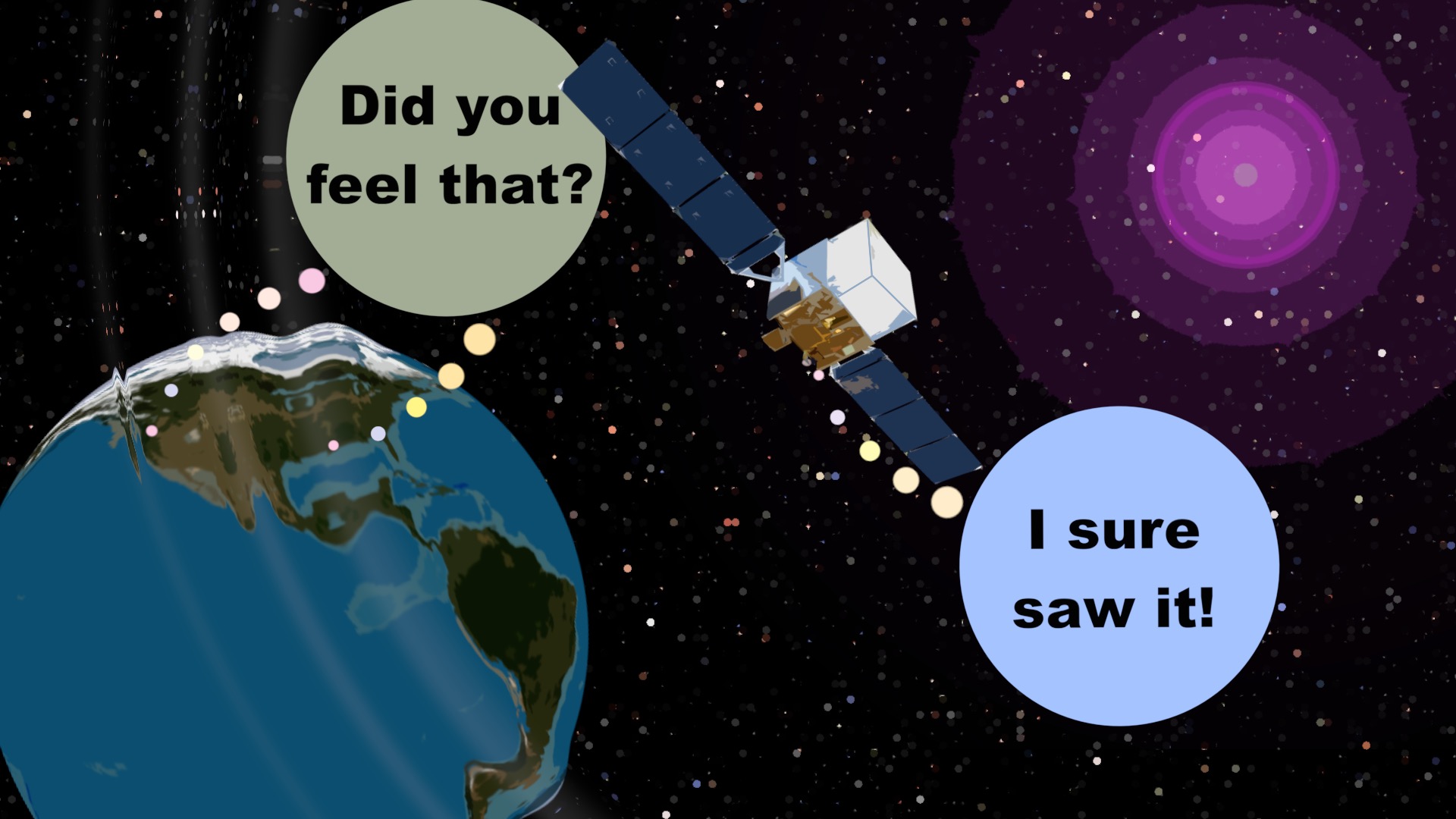
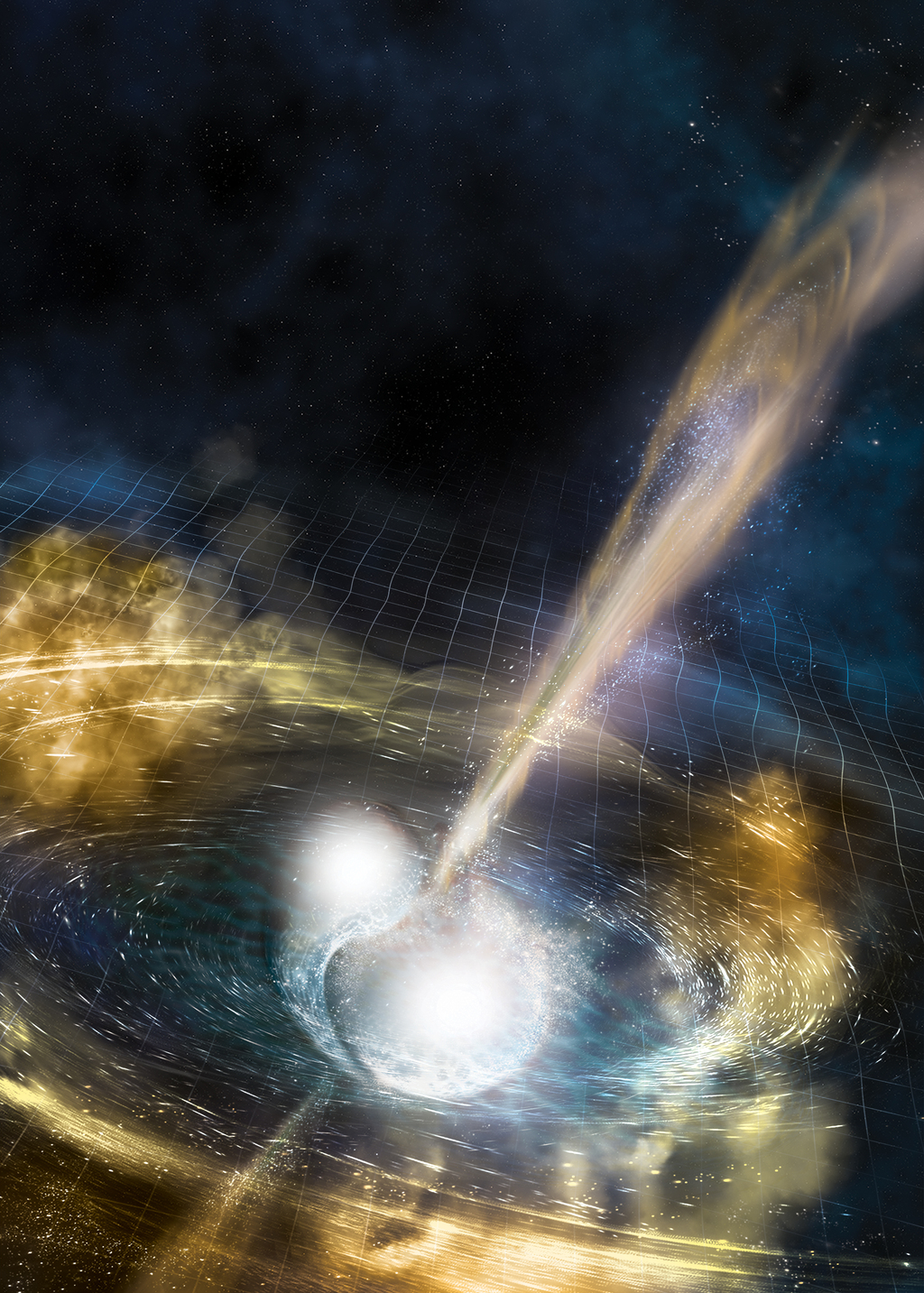
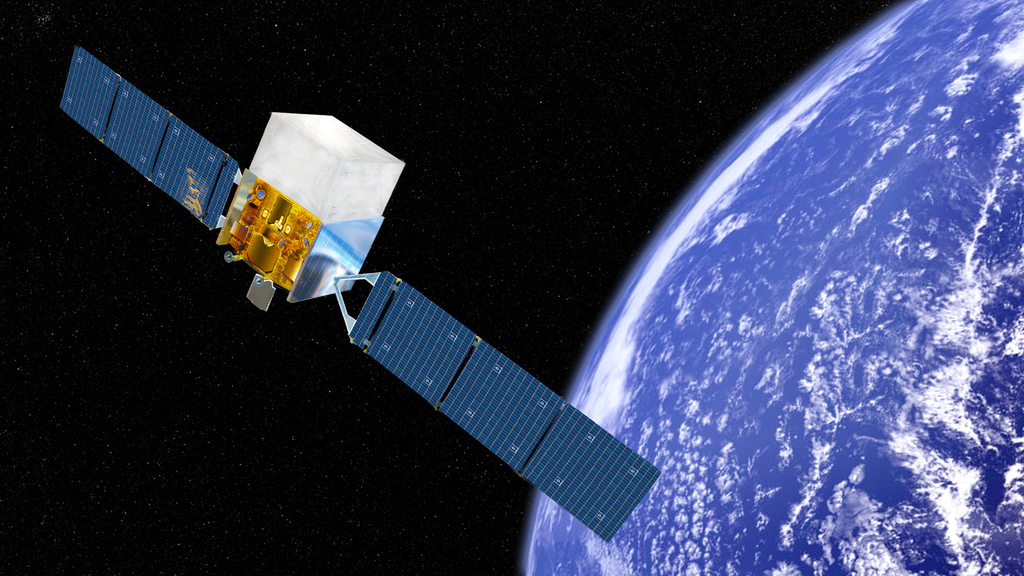
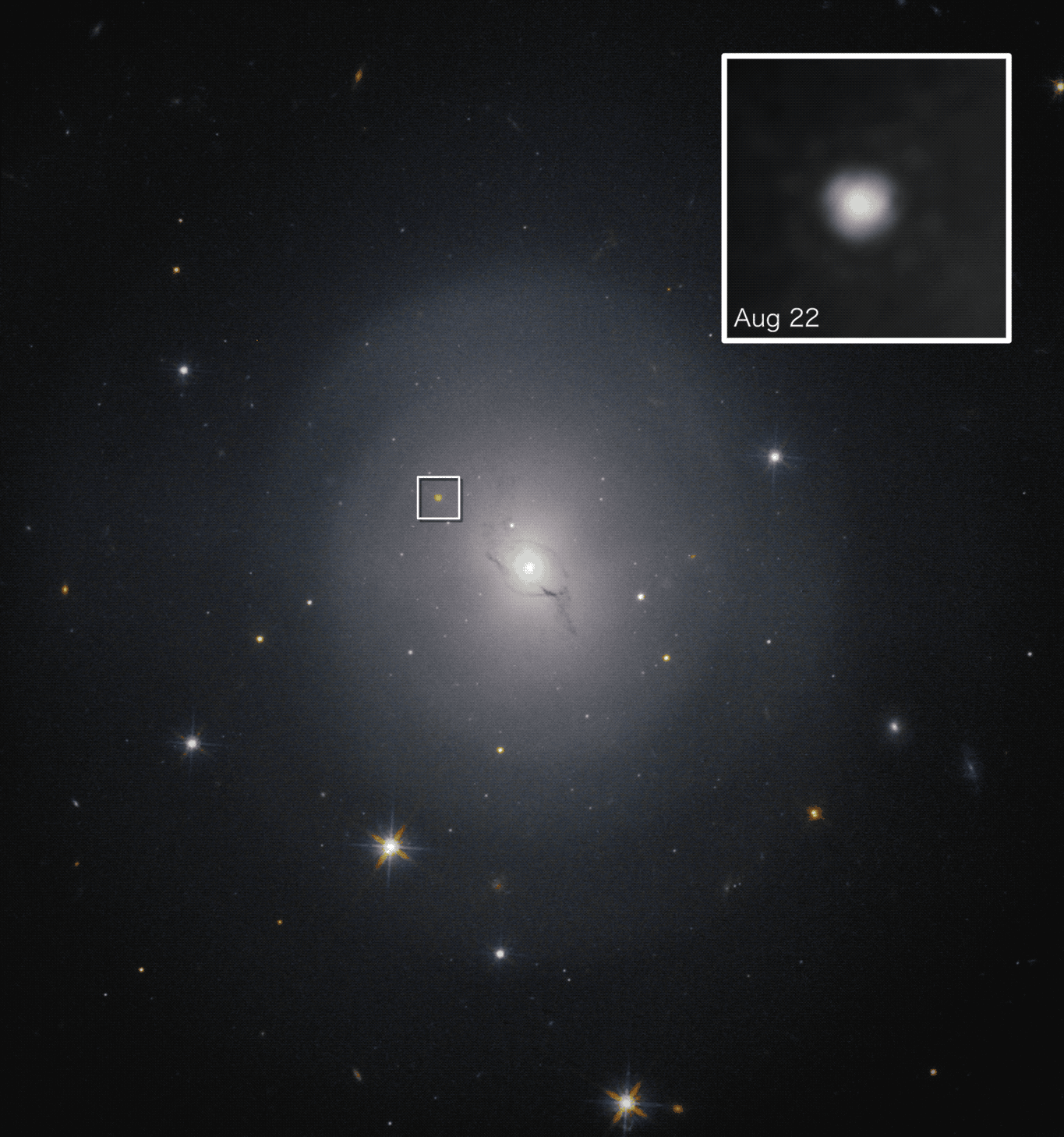
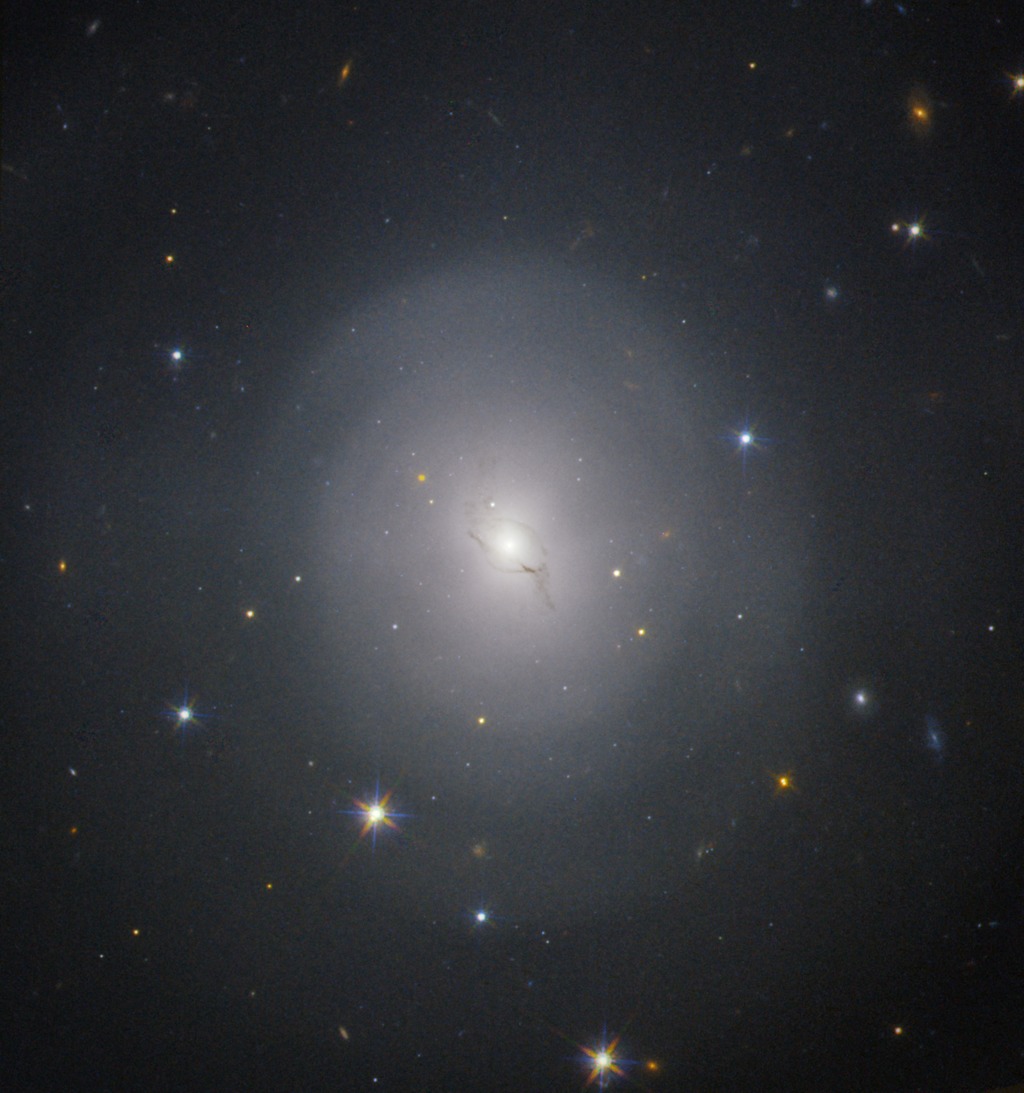
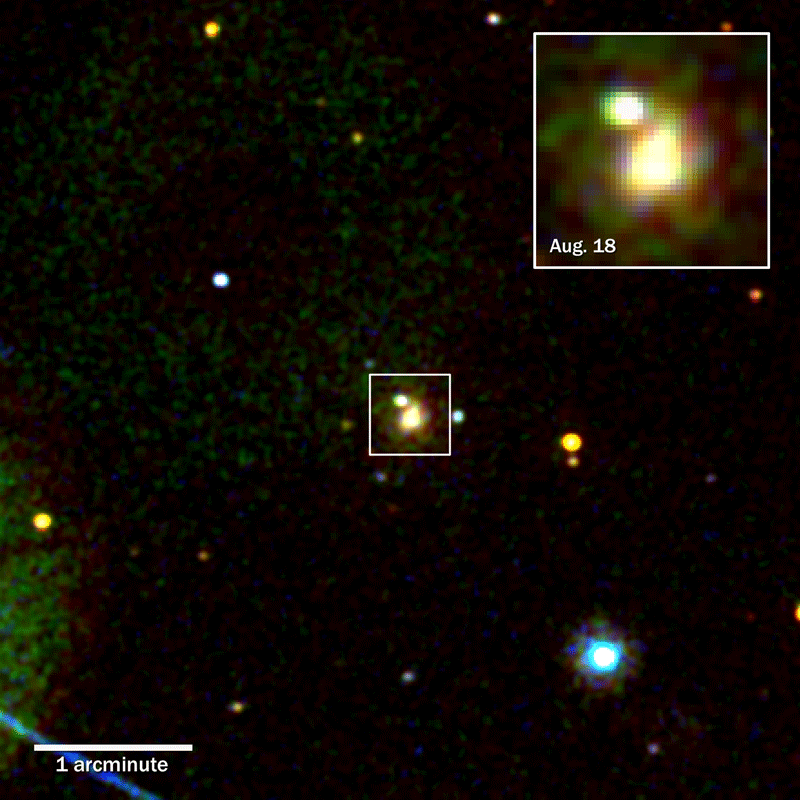
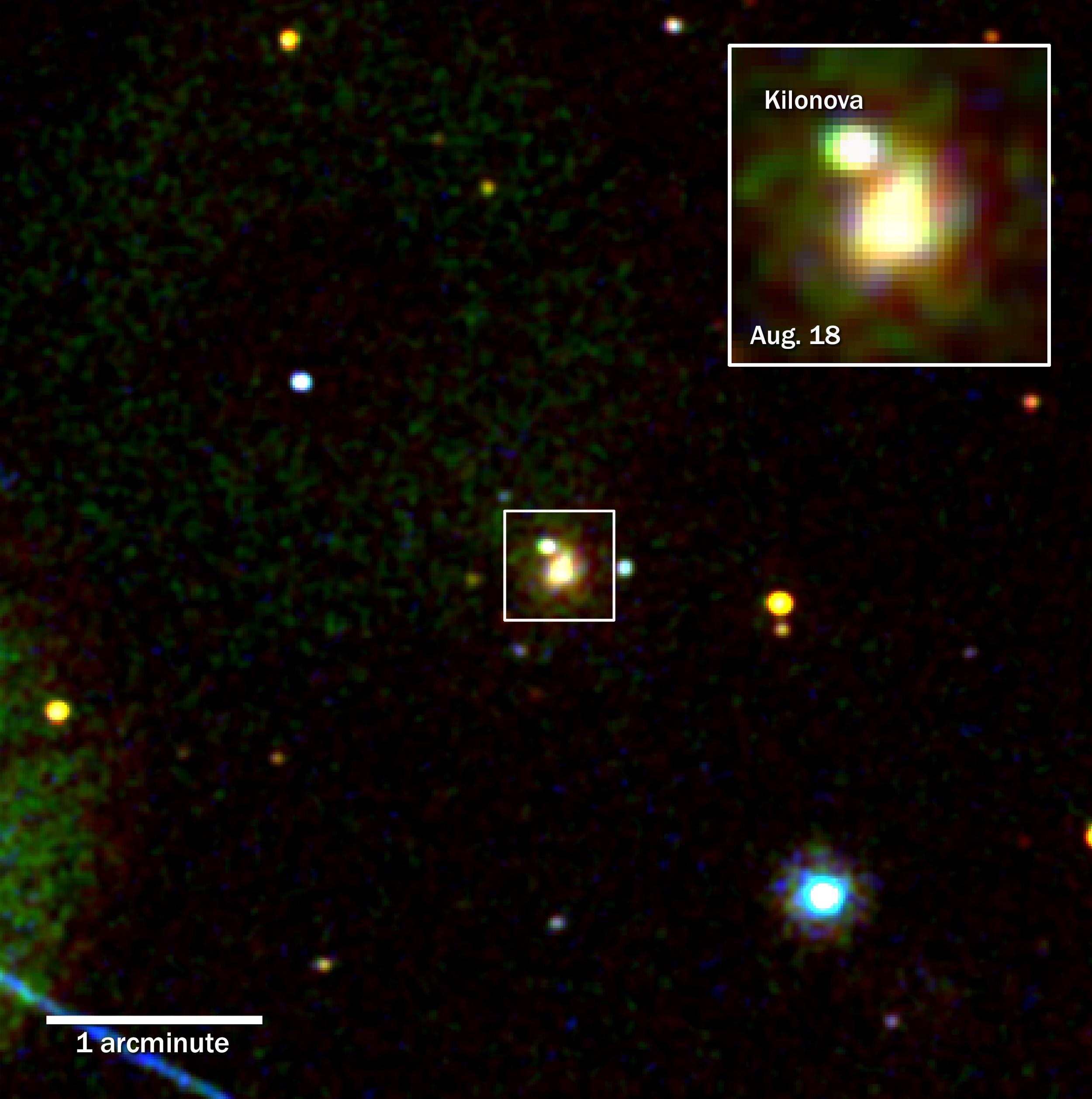
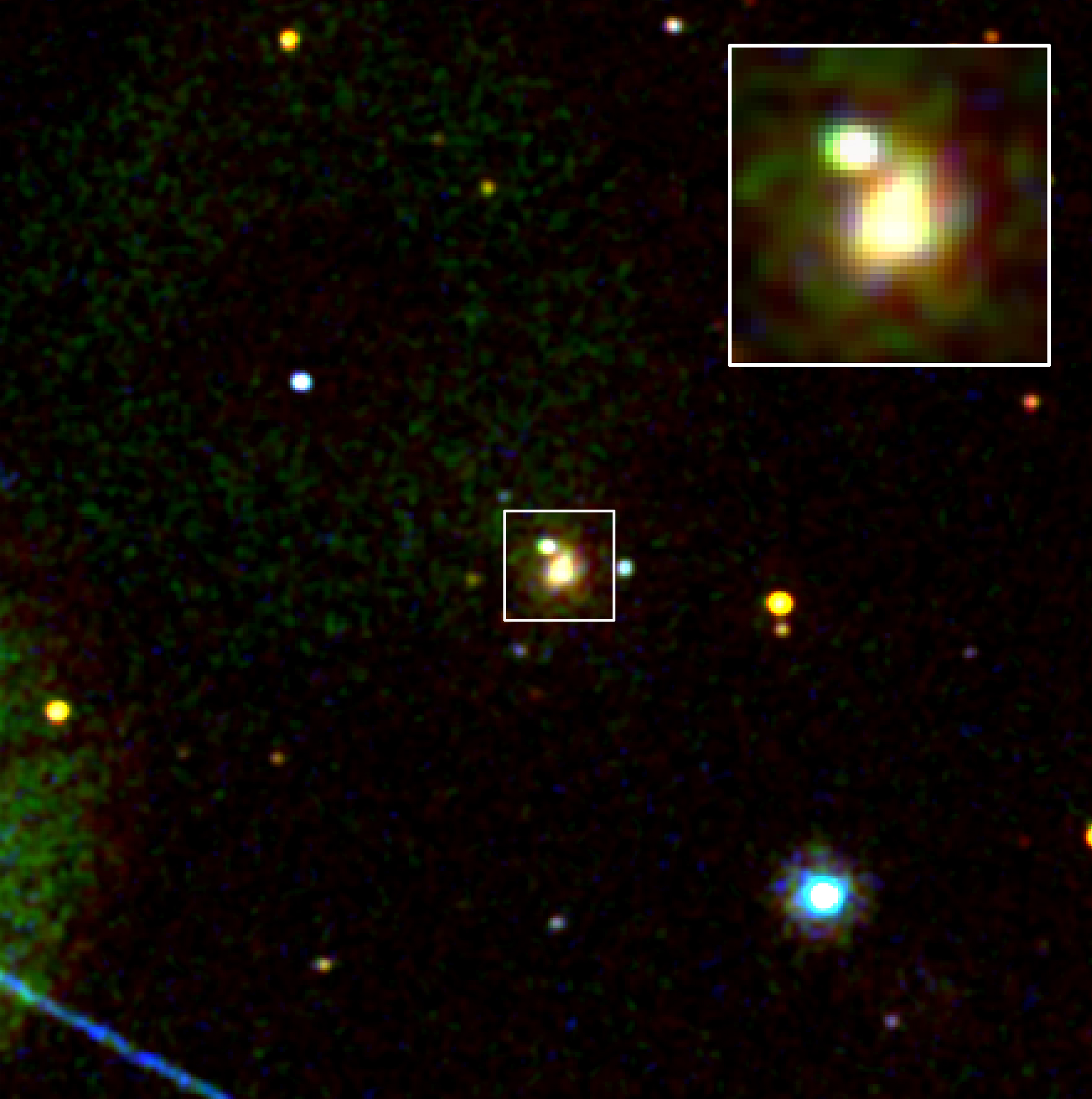
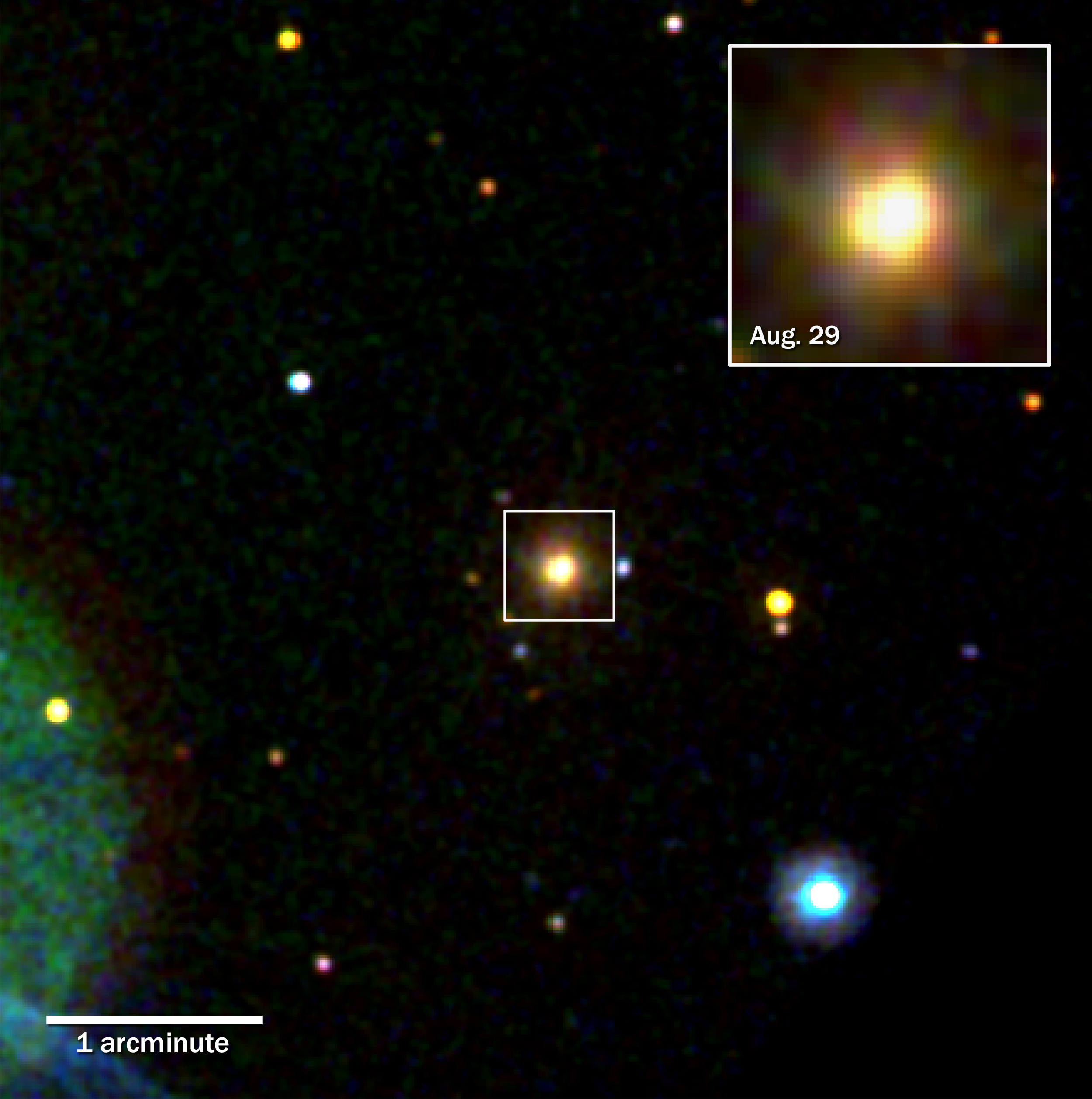
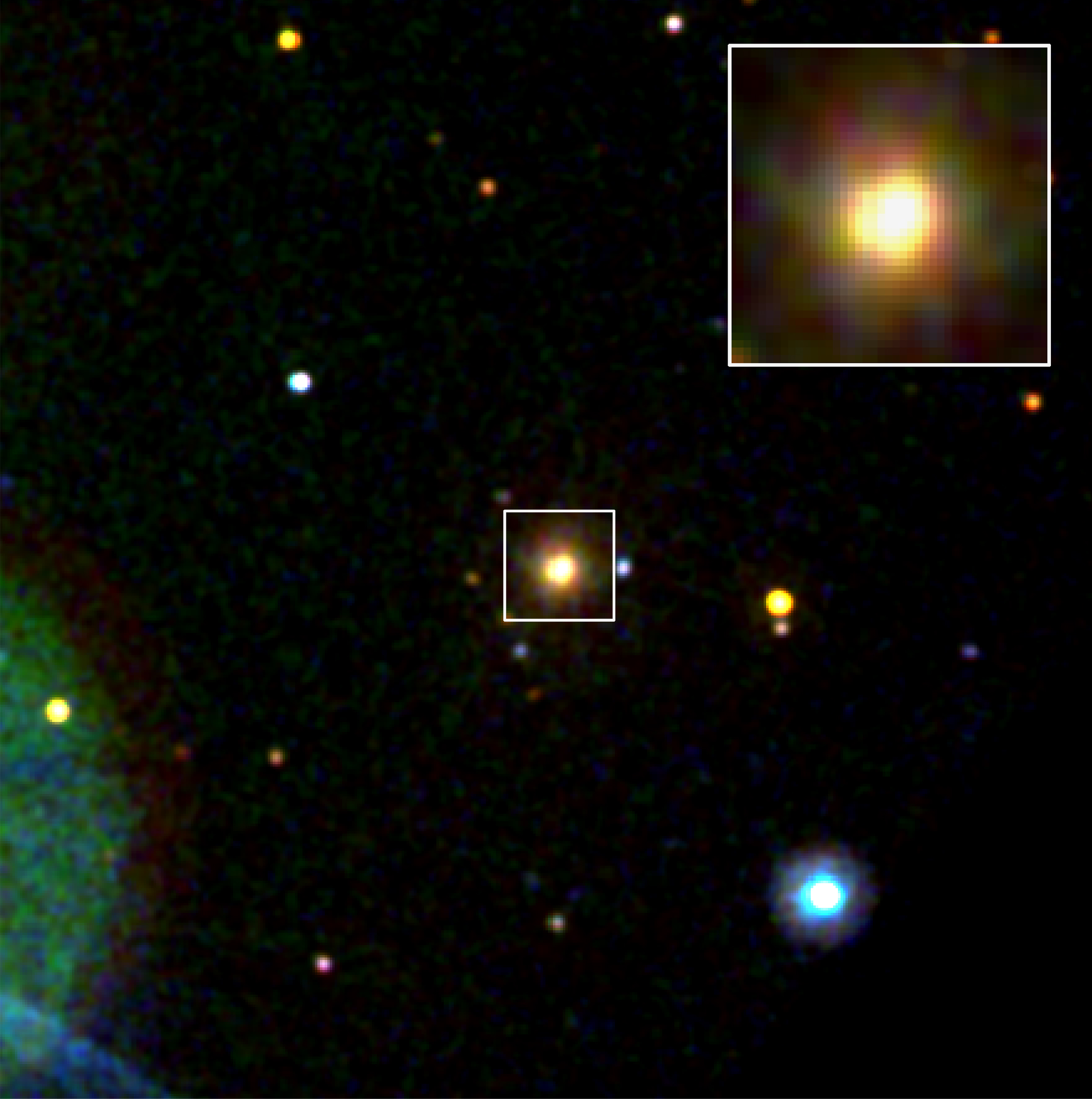
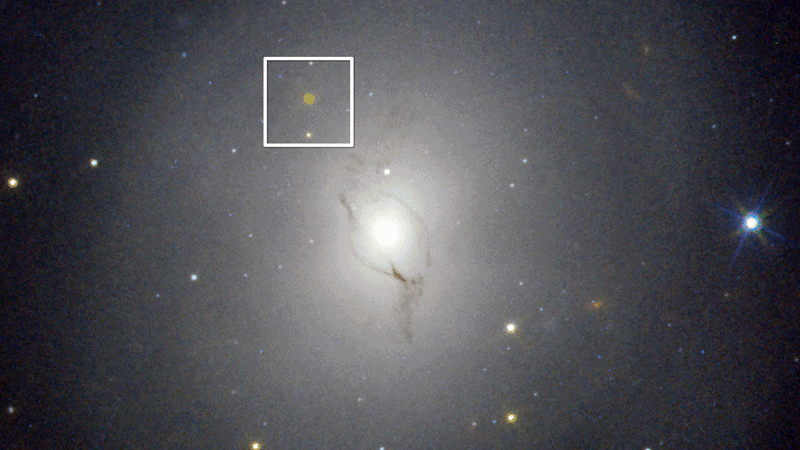
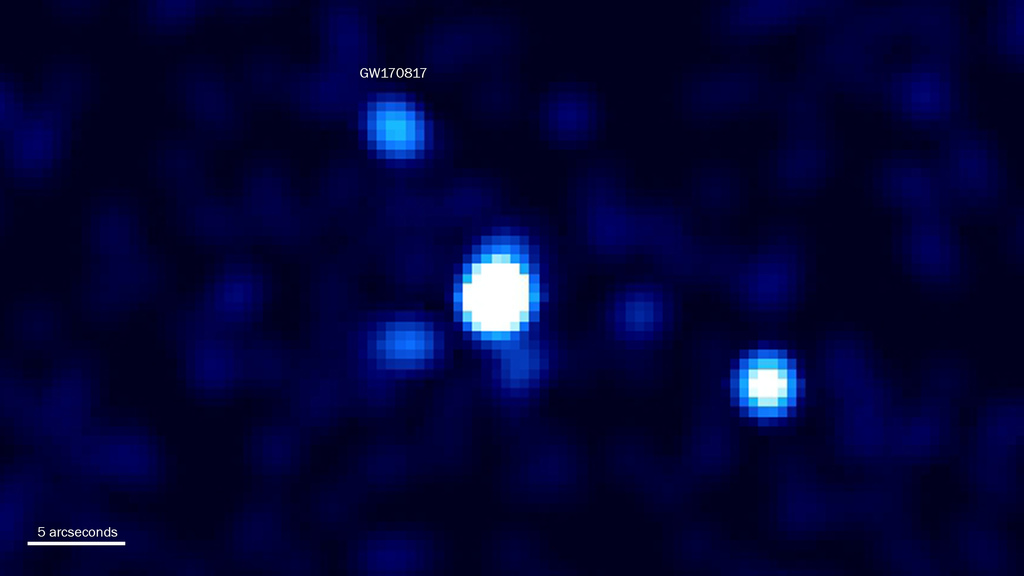

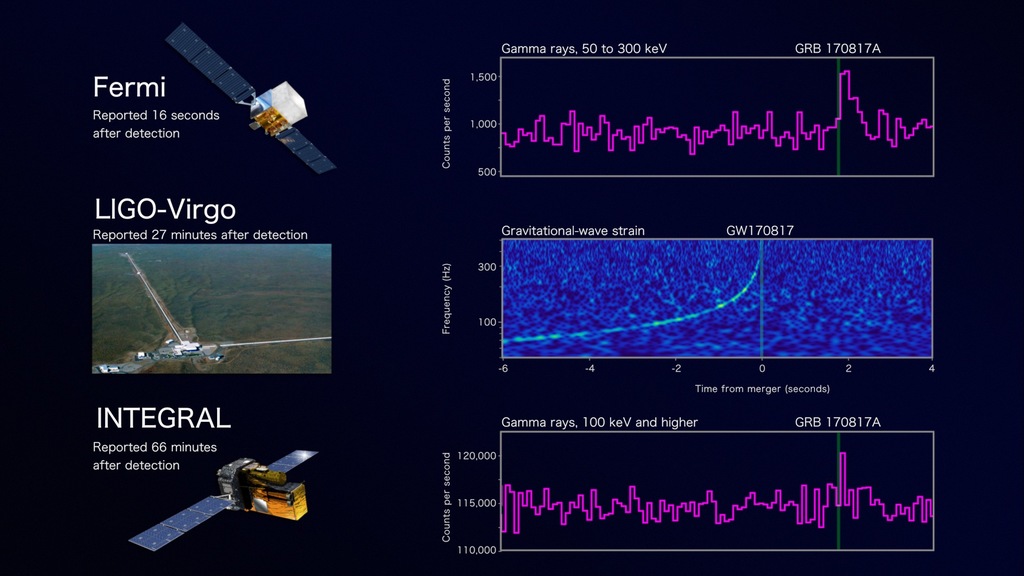
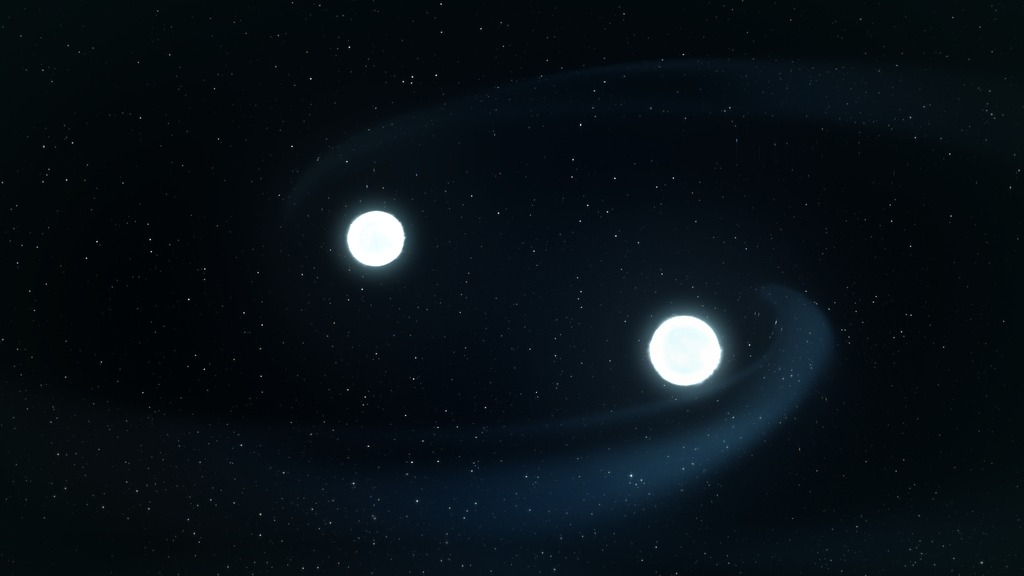
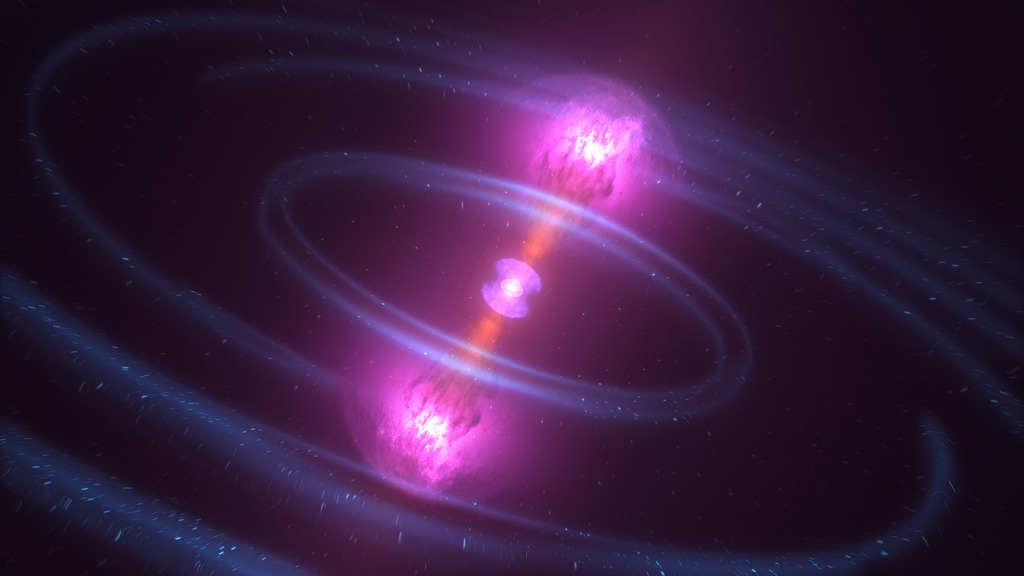
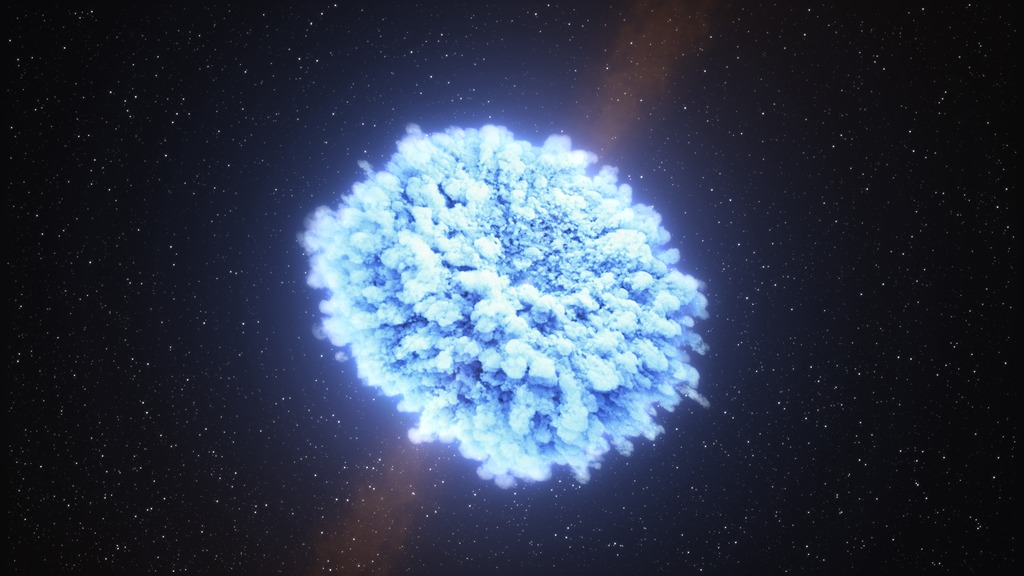
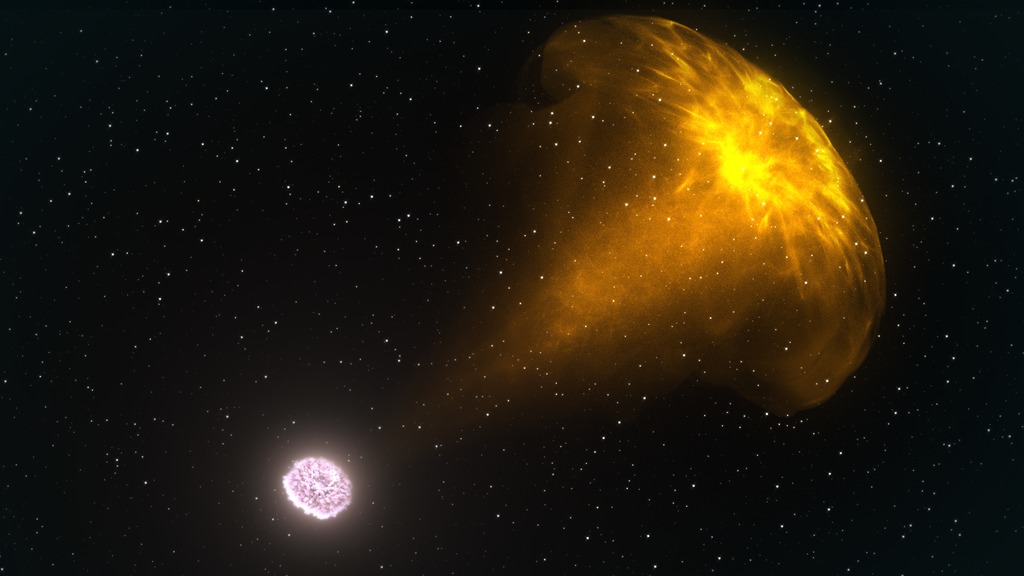
Doomed Neutron Stars Create Blast of Light and Gravitational Waves
Shortly after 8:41 a.m. EDT on Aug. 17, NASA's Fermi Gamma-ray Space Telescope picked up a pulse of high-energy light from a powerful explosion, which was immediately reported to astronomers around the globe as a short gamma-ray burst. The scientists at the National Science Foundation’s Laser Interferometer Gravitational-wave Observatory (LIGO) detected gravitational waves dubbed GW170817 from a pair of smashing stars tied to the gamma-ray burst, encouraging astronomers to look for the aftermath of the explosion. Shortly thereafter, the burst was detected as part of a follow-up analysis by ESA’s (European Space Agency’s) INTEGRAL satellite.
NASA's Swift, Hubble, Chandra and Spitzer missions, along with dozens of ground-based observatories, including the NASA-funded Pan-STARRS survey, later captured the fading glow of the blast's expanding debris.
Neutron stars are the crushed, leftover cores of massive stars that previously exploded as supernovas long ago. The merging stars likely had masses between 10 and 60 percent greater than that of our Sun, but they were no wider than Washington, D.C. The pair whirled around each other hundreds of times a second, producing gravitational waves at the same frequency. As they drew closer and orbited faster, the stars eventually broke apart and merged, producing both a gamma-ray burst and a rarely seen flare-up called a "kilonova."
Neutron star mergers produce a wide variety of light because the objects form a maelstrom of hot debris when they collide. Merging black holes -- the types of events LIGO and its European counterpart, Virgo, have previously seen -- very likely consume any matter around them long before they crash, so we don't expect the same kind of light show.
Within hours of the initial Fermi detection, LIGO and the Virgo detector at the European Gravitational Observatory near Pisa, Italy, greatly refined the event's position in the sky with additional analysis of gravitational wave data. Ground-based observatories then quickly located a new optical and infrared source -- the kilonova -- in NGC 4993.
To Fermi, this appeared to be a typical short gamma-ray burst, but it occurred less than one-tenth as far away as any other short burst with a known distance, making it among the faintest known. Astronomers are still trying to figure out why this burst is so odd, and how this event relates to the more luminous gamma-ray bursts seen at much greater distances.
NASA’s Swift, Hubble and Spitzer missions followed the evolution of the kilonova to better understand the composition of this slower-moving material, while Chandra searched for X-rays associated with the remains of the ultra-fast jet.



















Related
For More Information
Credits
Scott Wiessinger (USRA): Lead Producer
Francis Reddy (Syneren Technologies): Lead Science Writer
Brian Monroe (USRA): Lead Animator
Scott Wiessinger (USRA): Animator
Julie McEnery (NASA/GSFC): Scientist
Brad Cenko (NASA/GSFC): Scientist
Eleonora Troja (University of Maryland College Park): Scientist
Aurore Simonnet (Sonoma State University): Artist
Francis Reddy (University of Maryland College Park): Graphics
Francis Reddy (Syneren Technologies): Lead Science Writer
Brian Monroe (USRA): Lead Animator
Scott Wiessinger (USRA): Animator
Julie McEnery (NASA/GSFC): Scientist
Brad Cenko (NASA/GSFC): Scientist
Eleonora Troja (University of Maryland College Park): Scientist
Aurore Simonnet (Sonoma State University): Artist
Francis Reddy (University of Maryland College Park): Graphics
Please give credit for this item to:
NASA's Goddard Space Flight Center. However, individual items should be credited as indicated above.
NASA's Goddard Space Flight Center. However, individual items should be credited as indicated above.
Short URL to share this page:
https://svs.gsfc.nasa.gov/12740
Missions:
Fermi Gamma-ray Space Telescope
Swift
Data Used:
Note: While we identify the data sets used in these visualizations, we do not store any further details nor the data sets themselves on our site.
This item is part of these series:
Narrated Movies
Astrophysics Visualizations
Astrophysics Animations
Astrophysics Stills
Keywords:
SVS >> Neutron Star
SVS >> X-ray
SVS >> Hyperwall
SVS >> Gamma Ray Burst
SVS >> Hubble Space Telescope
SVS >> Astrophysics
SVS >> Gravitational Waves
SVS >> Universe
SVS >> Space
NASA Science >> Universe
SVS >> LIGO
SVS >> Chandra
https://svs.gsfc.nasa.gov/12740
Missions:
Fermi Gamma-ray Space Telescope
Swift
Data Used:
Chandra/HRC-I
Hubble Space Telescope
Observed DataThis item is part of these series:
Narrated Movies
Astrophysics Visualizations
Astrophysics Animations
Astrophysics Stills
Keywords:
SVS >> Neutron Star
SVS >> X-ray
SVS >> Hyperwall
SVS >> Gamma Ray Burst
SVS >> Hubble Space Telescope
SVS >> Astrophysics
SVS >> Gravitational Waves
SVS >> Universe
SVS >> Space
NASA Science >> Universe
SVS >> LIGO
SVS >> Chandra
